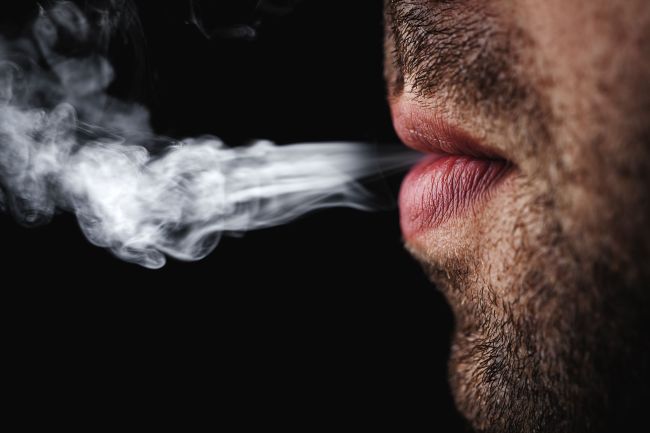Korean teenage smokers heavily influenced by parents: study
By 이다영Published : Aug. 17, 2015 - 18:01
A South Korean teenager whose parents are both smokers is more than four times as likely to smoke as a teenager with nonsmoking parents, a government report showed Monday.
The report, released by the Korea Centers for Disease Control and Prevention, anonymously surveyed 75,000 middle and high school students last year. It showed that 17.8 percent of Korean teens whose parents both smoke were smoking as of last year. Meanwhile, only 4.3 percent of teenagers with nonsmoking parents were smoking.
The study also found that Korean teen smokers are more influenced by their mothers than fathers. A total of 13.6 percent of teenagers with smoking mothers but without smoking fathers were smoking last year, while only 6.4 percent of those with smoking fathers but without smoking mothers were doing the same.
Korean teens who smoke were also significantly influenced by their friends and siblings. While only 0.8 percent of Korean teens whose close friends don’t smoke were smoking last year, 13.5 percent of those whose friends smoke picked up the habit. Also, 15.8 percent of teens whose siblings smoke followed suit, compared to 4.27 percent of those without smoking siblings.
The report, released by the Korea Centers for Disease Control and Prevention, anonymously surveyed 75,000 middle and high school students last year. It showed that 17.8 percent of Korean teens whose parents both smoke were smoking as of last year. Meanwhile, only 4.3 percent of teenagers with nonsmoking parents were smoking.
The study also found that Korean teen smokers are more influenced by their mothers than fathers. A total of 13.6 percent of teenagers with smoking mothers but without smoking fathers were smoking last year, while only 6.4 percent of those with smoking fathers but without smoking mothers were doing the same.
Korean teens who smoke were also significantly influenced by their friends and siblings. While only 0.8 percent of Korean teens whose close friends don’t smoke were smoking last year, 13.5 percent of those whose friends smoke picked up the habit. Also, 15.8 percent of teens whose siblings smoke followed suit, compared to 4.27 percent of those without smoking siblings.

The report also showed that the smoking rate of teenagers who attend schools that focus on job training was significantly higher than those who attend schools that concentrate on academics. The smoking rate for students who attend vocational schools was 25.6 percent, while that of students at academic schools was 10.9 percent.
Other correlations were found in socioeconomic status of the parents and academic performance. While 11.8 percent of teens who declared a low household income level were smoking, 7.2 percent of those in high-income homes were doing the same.
Also, the proportion of smoking teens who said their school performance was low (15.2 percent) was four times higher than those who said they are doing well in school (3.8 percent).
Teen smoking was also associated with mental health and teen drinking. The number of teenagers who both drink and smoke was 6.4 times higher than those who drink but don’t smoke. Smoking teenagers were also 1.9 times more likely to be depressed and 1.4 times more likely to skip their breakfasts than nonsmoking teens.
According to the U.S.’ Centers for Disease Control and Prevention, teen smokers are more likely to use illegal drugs, and about one-third of them will continue to smoke and die later in life from a smoking-related illness.
South Korea is home to almost 10 million smokers, and an estimated 57,000 die each year due to smoking-related diseases including lung cancer. Last year, it had one of the highest smoking rates for adult males among the nations of the Organization for Economic Cooperation and Development at 43.7 percent, surpassing the OECD average of 26 percent.
The parliament last year approved an 80 percent increase in the price of cigarettes in an effort to curb smoking. The new bill took effect Jan. 1.
By Claire Lee (dyc@heraldcorp.com)


















![[Today’s K-pop] Treasure to publish magazine for debut anniversary](http://res.heraldm.com/phpwas/restmb_idxmake.php?idx=642&simg=/content/image/2024/07/26/20240726050551_0.jpg&u=)